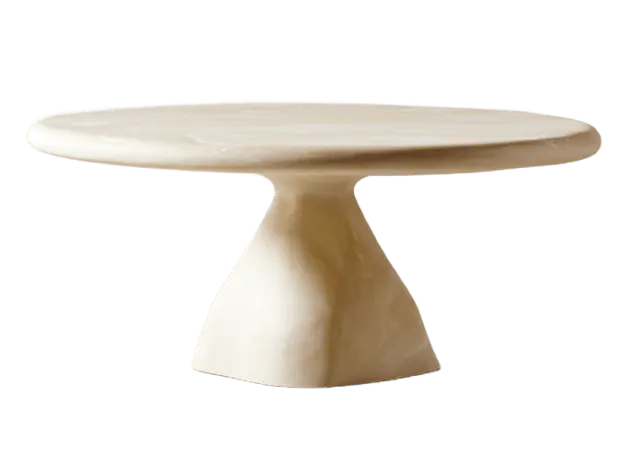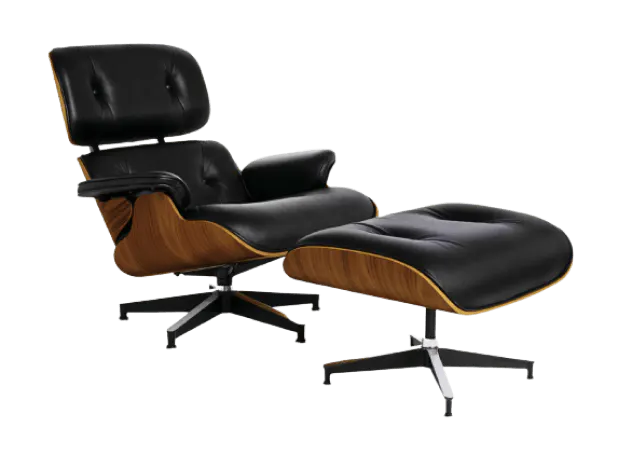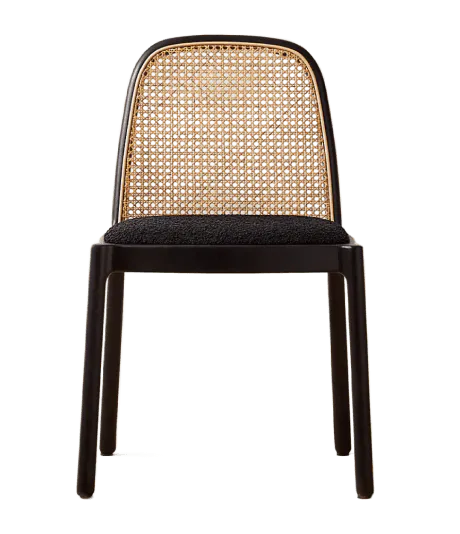What is a Chandelier?
A chandelier is more than just a light fixture; it’s a statement piece. Suspended from the ceiling, these ornamental lighting fixtures are designed to hold multiple light sources, often arranged in a branched structure. Historically, chandeliers held candles, with their warm flicker illuminating grand halls and dining rooms. Modern chandeliers, however, lean on incandescent or LED bulbs, making them practical for today’s needs while retaining their timeless appeal.
Their design isn’t just about function; it’s about distributing light to elevate a room’s ambiance. Whether you’re after a cozy glow or an elegant sparkle, a chandelier does both effortlessly.
Types of Chandeliers
There are various chandelier types, including traditional crystal chandeliers that exude elegance with their intricate designs and shimmering crystals, and modern chandeliers that feature sleek, minimalist styles and innovative materials like metal or glass.
Crystal Chandeliers
Crystal chandeliers exude timeless elegance. Their reflective prisms scatter light into dazzling patterns, creating a sophisticated and luminous ambiance. Often seen in dining rooms or formal spaces, they add an undeniable sense of grandeur.
These chandeliers work well in homes aiming for a classic or luxurious aesthetic. While they require regular dusting to maintain their brilliance, their ability to enhance the atmosphere of a room makes them a popular choice. Whether paired with traditional furnishings or a modern twist, crystal chandeliers remain a staple in refined interior design.
Glass Chandeliers
Glass chandeliers are celebrated for their adaptability. They come in endless designs, from frosted glass for modern interiors to colored or stained glass for vintage vibes. These fixtures make great entryway chandeliers. They can also fit seamlessly into spaces like living rooms or kitchens.
Their light can be subtle or striking, depending on the finish and structure. Glass chandeliers are easy to clean, typically needing a quick wipe to stay pristine. Their versatility makes them an excellent choice for homeowners looking for a balance of style and functionality.

Image: Sasakwa 5-Light Iron Dimmable Wagon Wheel Chandelier ETL Listed
Brass Chandeliers
Brass chandeliers bring warmth and charm to any room. Their metallic tones pair beautifully with natural elements like wood and stone, making them ideal for rustic or industrial designs. These fixtures are found in dining areas, kitchens, or even bedrooms and add depth and character to interiors.
Brass ages gracefully, developing a patina over time that enhances its appeal. With minimal upkeep—just occasional polishing to preserve its luster—brass chandeliers are a durable and stylish addition to any home.
Wooden Chandeliers
Wooden chandeliers offer a natural, earthy aesthetic that feels cozy and refined. Crafted from materials like reclaimed or carved wood, they’re a perfect fit for rustic or farmhouse-style interiors. Their textures and tones bring warmth to spaces like dining rooms, living areas, or bedrooms.
Wooden chandeliers, like this rustic 8-light wood chandelier, require minimal maintenance, often needing just an occasional dusting. For those seeking a fixture that combines charm, durability, and a connection to nature, wooden chandeliers provide a distinctive option that stands out in any room.
Materials Used

Image: Hurleigh 14 - Light Globe Chandelier
Crystal
Crystal chandeliers are celebrated for their ability to transform light into a spectacle. Crafted from quartz or high-quality glass, the crystals act like tiny prisms, bending and scattering light to create a sparkling glow.
This type of chandelier is often the centerpiece of a room like this rain chandelier with crystal raindrops. Its reflective surfaces draw the eye, adding elegance to formal spaces like dining rooms or ballrooms.
Maintenance is key. Dusting each crystal regularly keeps it sparkling. When cleaned, these chandeliers seem to come alive, casting intricate patterns on walls and ceilings. Crystal chandeliers remain a timeless choice for anyone wanting sophistication.
Glass
Glass chandeliers are a study in versatility. Clear glass can feel minimalist, while frosted or colored designs offer warmth or boldness. Blown-glass elements and etched patterns add personality and charm.
They work in a variety of settings, from modern to vintage interiors. In living rooms, they can create soft, diffused lighting, while in kitchens, they offer a clean, contemporary look.
Cleaning glass chandeliers is relatively easy. A quick wipe with a damp cloth keeps them looking new. This balance of aesthetics and practicality makes glass a favorite material for many.
Metal
Metal chandeliers bring strength and character. Brass, with its golden tones, feels warm and inviting. Bronze offers depth, perfect for traditional or rustic spaces. Wrought iron, on the other hand, leans industrial, even medieval.
These chandeliers aren’t just durable; they’re adaptable. They fit well in a grand entryway as well as in a cozy dining nook.
Over time, metals like brass develop a patina, adding to their charm. Wrought iron needs minimal care—just the occasional dusting. For something lasting and stylish, metal chandeliers deliver a dependable option.
Wood
Wooden chandeliers are for those seeking warmth and a natural touch. They often feature reclaimed wood or intricate carvings, blending craftsmanship with sustainability.
These fixtures are ideal for rustic or farmhouse-style homes. Imagine one above a dining table, its earthy tones softening the room’s overall vibe.
Wooden chandeliers are relatively low-maintenance. Dust them occasionally to preserve their texture and color. They’re perfect for creating inviting, grounded spaces without feeling overly formal.
Placement and Use Cases
Dining Rooms
Chandeliers in dining rooms often steal the show. Positioned directly over the dining table, they don’t just light up meals; they elevate the room’s aesthetic.
Crystal chandeliers are especially popular here. Their reflective surfaces catch light beautifully, adding a touch of glamour to everyday dinners or formal gatherings.
Size matters, though. A chandelier that’s too large can overwhelm the table, while one that’s too small might feel out of place. The sweet spot is typically about half the table’s width, ensuring balance. Dimmers are also a great addition—they let you control brightness for different occasions.
Entryways
Entryways set the tone for the entire home, and chandeliers make them unforgettable. A grand light fixture here is like a warm handshake, welcoming guests in style.
Multi-tiered designs work best for tall ceilings, filling the vertical space without feeling cluttered. A compact but ornate chandelier adds just the right amount of flair in smaller entryways.
Placement is crucial. Centering the chandelier ensures it’s the first thing people notice. And if there’s a mirror nearby, it’ll reflect the light and make the space feel larger and more inviting.
Ballrooms
Ballrooms demand drama and chandeliers deliver it effortlessly. These vast spaces often call for oversized fixtures, sometimes spanning several feet in diameter.
Crystal chandeliers are a classic choice, their sparkling light bouncing off polished floors and mirrored walls. This creates a glow that feels both warm and luxurious.
The placement here isn’t just decorative, it’s also functional. Large chandeliers ensure even lighting across the room, especially during evening events. Many ballrooms pair their chandeliers with wall sconces for a cohesive look, amplifying the effect.
Living Rooms
Living rooms benefit from chandeliers in ways you might not expect. Beyond providing light, they act as a design anchor, tying the space together.
Minimalist styles with clean lines suit modern interiors, while ornate brass or wooden chandeliers fit well in cozy, traditional spaces.
The trick is to match the chandelier’s size to the room. A 20 to 30-inch wide fixture works for most average-sized living rooms. Placing it in the center ensures even light distribution, but it can also go above a coffee table for a more relaxed vibe.
Design and Style Variations

Image: Modern Rectangular Tree Branch Crystal Chandelier for Kitchen Island, Dining Room, High Ceiling
Minimalist
Minimalist chandeliers strip lighting down to its essentials. They focus on function over flair but feel elegant in their simplicity.
Picture a single pendant with a matte black finish or a slim metal frame holding exposed LED bulbs. These designs work best in modern or industrial spaces, where less is more.
Materials like brushed steel and frosted glass are common, keeping the look clean and uncluttered. Sizes vary, but most minimalist chandeliers are compact, making them a great fit for small rooms or open layouts. Paired with neutral tones, they offer understated sophistication.
Ornate
Ornate chandeliers carry a sense of history. They’re all about intricate details—twisting arms, floral motifs, and cascading crystals.
These fixtures are often large and commanding, designed to fill high-ceilinged spaces like ballrooms or formal dining areas. Traditional materials like bronze and brass give them a timeless feel, while crystal accents reflect light beautifully.
Placement is everything. Ornate chandeliers shine in spaces where they can be fully appreciated. Pair them with classic furniture and rich textures (like velvet or wood) to complete the look. It’s luxury lighting that doesn’t hold back.
Contemporary
Contemporary chandeliers don’t play by the rules. They experiment with bold shapes, unexpected materials, and cutting-edge designs.
You might see a fixture that combines acrylic panels, polished chrome, and LED strips into a piece that’s as much art as it is lighting. These designs often feature asymmetry or layered elements, giving them a sculptural quality.
Contemporary styles fit well in open-plan homes or spaces with modern furniture. They’re ideal for those who want their lighting to stand out—not just blend in. Choose one with dimmable bulbs to shift the mood on demand for extra impact.
Functionality and Lighting Impact
Chandeliers are not just about looks—they have a job. Sure, they make a statement, but they also transform how a room feels. With its multi-directional lighting, a well-placed chandelier helps spread a balanced glow throughout a space. This light eliminates harsh shadows, creating a soft, even atmosphere.
A chandelier can change the vibe completely in rooms like dining areas, where the mood is everything. It’s perfect for a meal with family or a dinner party with friends. The warmth from the fixture makes any room feel more inviting and luxurious.
Even in smaller, modest spaces, a chandelier can give the illusion of grandeur. The right lighting can make a small room feel expansive, even regal. It’s like giving your space a quick makeover, all thanks to light. If you’re looking to add some style with a functional edge, a chandelier does it effortlessly.
Maintenance and Care
Chandeliers might be beautiful, but they can also be a hassle if you don’t keep up with them. Dust tends to settle on the crystals and glass, dulling their shine. It’s probably a good idea to clean them every few months. A microfiber cloth with a gentle cleaner works wonders (just don’t use anything harsh).
But it’s not just about dusting. Safety’s a big deal, too. You’ll want to check the fixture’s suspension every now and then, especially with larger chandeliers. Make sure the ceiling mount is secure. This way, you’ll keep your chandelier in one piece—and prevent any unfortunate accidents.
Regarding the chandelier’s light bulbs, it’s worth considering energy-efficient LEDs. They last much longer and use less power, which means lower electricity bills. Plus, they offer consistent brightness. Small changes like this can make a big difference in the long run.
Tips for Choosing a Chandelier
Match Design to Room Style and Size
A chandelier’s design should fit the vibe of the room. In a small space, go for something simple—maybe a pendant or a sleek design. It won’t overwhelm the room and still adds a stylish touch. A grander chandelier works best in bigger rooms, like a spacious dining area or living room. Think multi-tiered crystals or something with lots of shine to fill the space.
Opt for LED Bulbs
Chandeliers with LED bulbs are a game changer. They’re not only energy-efficient, but they also come in various colors—warm, cool, and even daylight. You can adjust the light to match the mood of the room. It’s one of those little things that can change the atmosphere of a space.
Consider Ceiling Height
Height matters. A chandelier too close to the ceiling will miss its lighting potential, while one hanging too low can feel like it’s in your face. Aim for 30-36 inches in a dining room between the bottom of the chandelier and the table. This gives you enough clearance without blocking the light.
Conclusion
A chandelier isn’t just a light fixture—it’s a blend of style, function, and history. Whether it’s a sparkling crystal piece in a formal dining room or a rustic wooden design in a cozy living space, chandeliers transform rooms with their presence.
Choosing the right one involves balancing aesthetics, size, and functionality, but the result is always worth it. Proper care ensures these timeless fixtures remain a highlight for years to come. With endless options, there’s a chandelier for every taste and space, making it one of the most versatile and impactful design elements in any home.
Looking for an affordable way to refresh your space with a chandelier? Simply copy and paste the URL of your favorite design into Dupe and let the tool show you similar options at a fraction of the price. Upgrade your home without overspending.
FAQ
What is the definition of a chandelier?
A chandelier is a decorative lighting fixture, often suspended from a ceiling, that typically features multiple light bulbs. It can serve both functional and aesthetic purposes, providing task lighting or simply adding to the ambiance of a room. Chandeliers come in various styles, from traditional crystal designs to modern pendant lights. They are usually designed with decorative elements like glass shades or rock crystals to enhance their beauty.
What are the different types of chandeliers?
Chandeliers come in many types, including the popular glass chandelier, wheel chandelier, and pendant lights. Each type varies in size, design, and light output. Some, like the 18th century-style candelabra, are more traditional, while others, like art deco chandeliers, offer a modern flair. No matter the type, chandeliers are often used as focal points in dining rooms or entryways, with the lighting fixture becoming a key part of the room's decor.
How does the word history of "chandelier" connect to its meaning?
The word "chandelier" originates from the Latin term candelabrum, which refers to a holder for multiple candles. Over time, the term evolved to describe an elaborate light fixture, often featuring multiple light bulbs suspended from the ceiling. Understanding its word history helps us appreciate the chandelier's design and function, especially when considering how it has transformed through the centuries, particularly during the 20th century.
What role do glass shades play in chandeliers?
Glass shades on chandeliers provide both functional and decorative purposes. They help to diffuse the light, softening its intensity, which is ideal for task lighting in dining rooms or living spaces. Glass shades can also enhance the overall aesthetic, adding sophistication to the chandelier. Whether clear or frosted, they come in a wide variety of shapes and styles to match different types of chandeliers, like elegant rock crystal or modern pendant light designs.
How do electrical wiring and installation affect a chandelier?
Electrical wiring is an important consideration when installing a chandelier. A high-quality chandelier needs proper wiring to ensure safety and functionality. The wiring should be checked to avoid any hazards, whether you’re installing a glass chandelier or a pendant light. Proper installation ensures the light fixture is securely suspended from a ceiling and operates as intended. Always follow electrical wiring guidelines and consider professional help if needed.
















